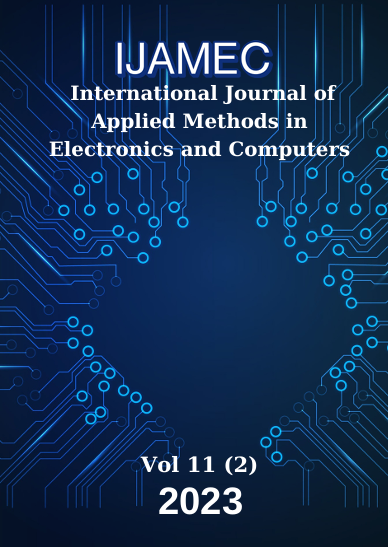The Natural and Physical Effects on the Mobile Robot Designed to Recognize and Collect Objects
DOI:
https://doi.org/10.18100/ijamec.1300406Keywords:
Arduino, Artificial intelligence, Image processing, Mobile robot, Raspberry piAbstract
Today, studies are carried out in the field of robotics, such as the discovery of old or unknown places, their targeting, and object recognition. The designed robots can be dressed as cars, drones, people or arms for use. This common goal is to reduce humans work and to provide robots do everything what humans can do. These processes include hardware and software tasks. Artificial intelligence offers us the ability to teach and apply intelligence to the machines with the help of software. The aim of this study is to design a prototype mobile robot that can detect and recognize fruits that are far from the current location, but reachable by the robot, and can collect the fruits and transport them from one place to another. A prototype mobile robot was developed to obtain which conditions effects the robot purpose, when the environment was not planned for specific conditions. Experiments on the natural environment showed us that if sufficient light and angle were available then an average of 95% success rate in the correct recognition of objects and an average of 90% in detection achieved by the prototype robot. Moreover, the motor power and the arm handle area have very important role in the processes of the robot's hardware grasping and carrying the fruits. In addition, based on the observations obtained result of the experiments, ambient light is quite effective in capturing and detecting the object. The condition emerged result of an obstacle on the path was not considered in these experiments.Downloads
References
Today, studies are carried out in the field of robotics, such as the discovery of old or unknown places, their targeting, and object recognition. The designed robots can be dressed as cars, drones, people or arms for use. This common goal is to reduce humans work and to provide robots do everything what humans can do. These processes include hardware and software tasks. Artificial intelligence offers us the ability to teach and apply intelligence to the machines with the help of software. The aim of this study is to design a prototype mobile robot that can detect and recognize fruits that are far from the current location, but reachable by the robot, and can collect the fruits and transport them from one place to another. A prototype mobile robot was developed to obtain which conditions effects the robot purpose, when the environment was not planned for specific conditions. Experiments on the natural environment showed us that if sufficient light and angle were available then an average of 95% success rate in the correct recognition of objects and an average of 90% in detection achieved by the prototype robot. Moreover, the motor power and the arm handle area have very important role in the processes of the robot's hardware grasping and carrying the fruits. In addition, based on the observations obtained result of the experiments, ambient light is quite effective in capturing and detecting the object. The condition emerged result of an obstacle on the path was not considered in these experiments.
Downloads
Published
Issue
Section
License
Copyright (c) 2023 International Journal of Applied Methods in Electronics and Computers

This work is licensed under a Creative Commons Attribution-ShareAlike 4.0 International License.





